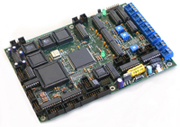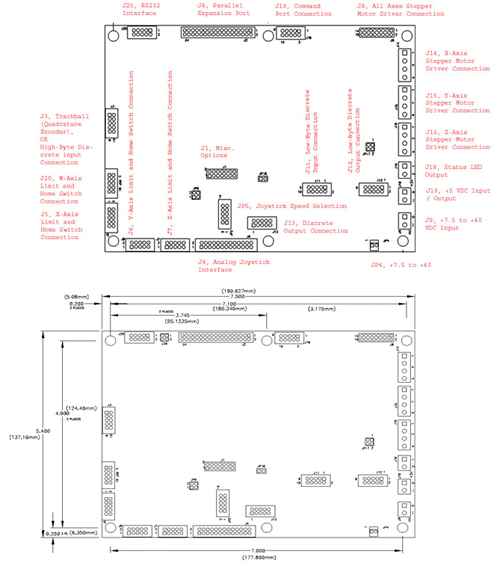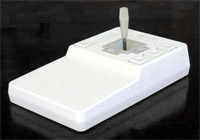
|
||||||||||||||||
| ||||||||||||||||
|
|
|
Quantity adjustment on next page The programmable series of Stepping Motor controllers are stand-alone or host controlled, easy-to-use, plug-and-play and cost effective solutions for motion control applications. These cards can also be operated using an analog joystick or a trackball with quadrature outputs. The speed of the motor is proportional to the tilt angle of the joystick or the rotational speed of the trackball. The joystick has three speed selection keys; fast, medium and slow speed. The card may be controlled in different ways; 1) Control Panel The intuitive Control Panel allows the user to set-up the system quickly. The operator is able to move the mechanism to different positions by pressing the corresponding buttons of the Control Panel or using the joystick / trackball. This motion profile may be recorded using the "Teach Mode" capability of the software. This profile may be uploaded to the controller to repeat the same exact motion. Absolutely no programming is required. 2) Host Controlled In this mode, the host sends a series of ASCII commands to the controller via the RS-232 serial port. The controller processes the incoming commands and responds with proper messages. 3) Stand-alone The controller is programmed in a high level BASIC-like programming language. The user composes, downloads and tests the motion profile in the supplied Integrated Development Environment (IDE). 4) Using the Analog Port An analog signal should be applied to the controller to move the corresponding motor. An analog joystick, a DC voltage source, or a potentiometer may be used. 5) Using the Two-Phase Quadrature Input A two-phase quadrature input should be applied to the controller to move the corresponding motor. A trackball with quadrature output may be used. The controller may be slaved or synchronized to another device, using the two-phase quadrature input. Programming instructions include motion control, interrogation, configuration, data flow, program flow commands, 32-bit logical and mathematical operations, and other miscellaneous commands. Modes of motion include point-to-point positioning, jogging, contouring, electronic gearing, and electronic cam. Operating Software Included Approximate Dimensions: 5.40" (137.2 mm) x 7.50" (190.27 mm) Approximate Weight: 0.5 Lbs (0.250 KG) Quantity adjustment on next page 
|
Copyright © ElectroMechanicsOnline.com










